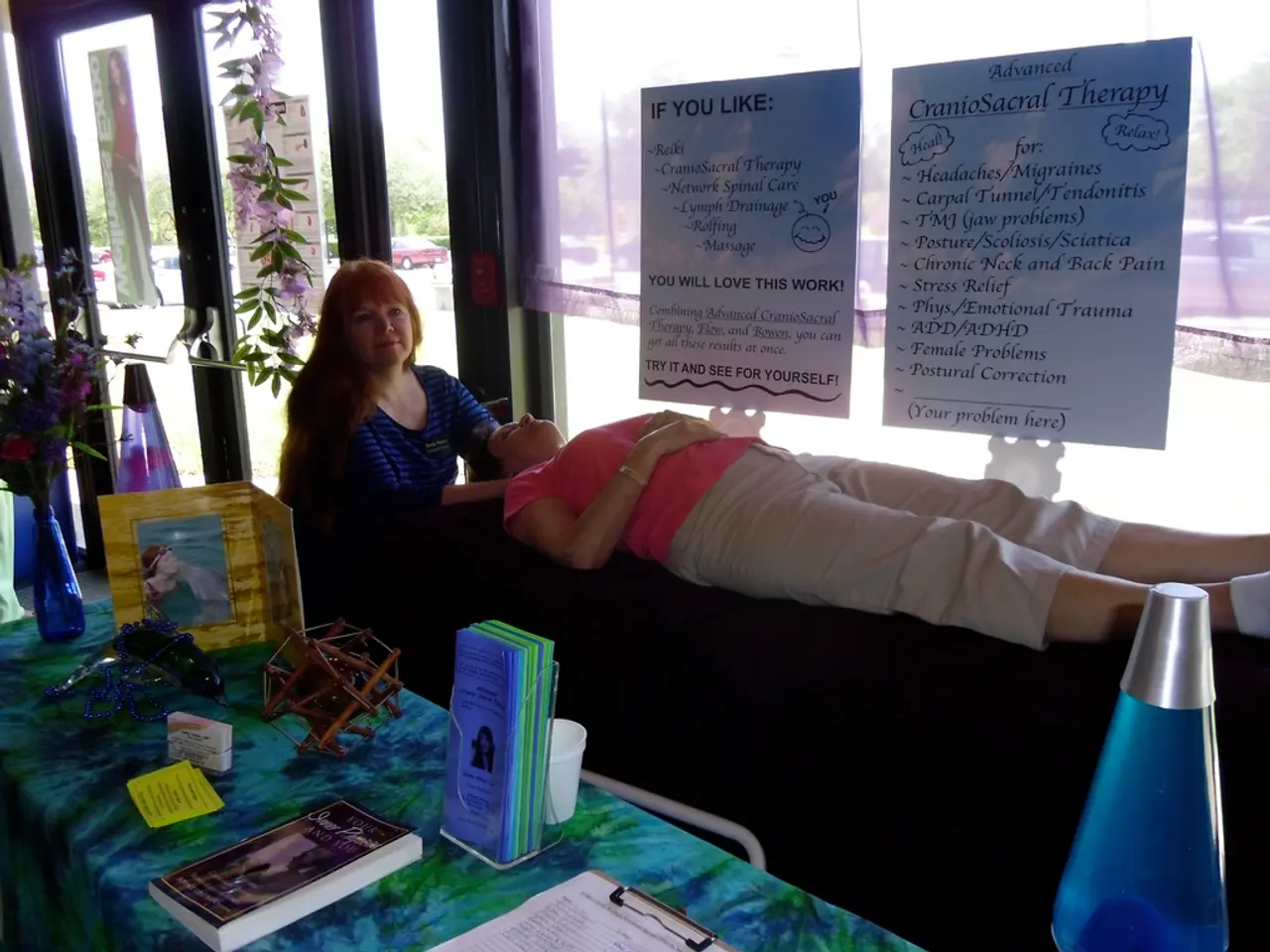Employing Relaxation Methods for Alleviating Carpal Tunnel Syndrome Pain
In the digital age, many of us spend long hours at our computers, and this can lead to a common condition known as carpal tunnel syndrome (CTS). This condition is caused by pressure on the median nerve in the wrist, resulting in symptoms such as pain, tingling, numbness, weakened grip strength, and difficulty with fine motor skills.
Fortunately, there are several relaxation techniques that can help manage and alleviate CTS pain. These methods, while not replacing medical interventions, can complement them effectively.
One such technique is therapeutic massage or myofascial release. This practice helps relax muscles, reduce inflammation, and improve blood flow around the median nerve. Devices like the CarpalRx, which mimic this massage, have shown high success rates in reducing CTS symptoms when used daily for several weeks.
Nerve gliding exercises are another effective approach. These exercises promote smooth movement of the median nerve through the carpal tunnel, preventing adhesions and reducing inflammation. They can restore nerve function and alleviate symptoms.
Wrist splinting, especially at night, is also beneficial. It maintains the wrist in a neutral position, reducing pressure on the median nerve and preventing painful positions during sleep.
Activity modifications, such as taking regular breaks during repetitive tasks and avoiding wrist positions that increase strain, help prevent symptom worsening.
Hand and wrist stretches can improve flexibility and reduce stiffness. Progressive muscle relaxation, which involves tensing and then releasing specific muscle groups, promotes relaxation.
Heat therapy and massage can also provide relief. Applying heat to the affected area can help relax tense muscles and increase blood flow, relieving pain and reducing inflammation. Massaging the hand, wrist, and forearm can help alleviate pain and relax the muscles.
Yoga-based stretching and strengthening can improve posture and nerve function, while manual therapy techniques like soft tissue mobilization can reduce muscle tension.
In summary, combining gentle massage, nerve gliding exercises, wrist support with splints, and frequent breaks provides effective relaxation and symptom relief for CTS. These methods help decrease inflammation, reduce nerve compression, and promote healing over time.
If you suspect you have CTS, it's important to seek a proper diagnosis and treatment plan from a healthcare professional. If symptoms persist or worsen, consult with a healthcare professional for comprehensive treatment options.
In the realm of health and wellness, chronic-kidney-disease might not be as directly connected to carpal tunnel syndrome (CTS), but maintaining a balanced diet and proper nutrition are crucial for overall health. Fitness and exercise promote good physical health, which in turn can contribute to better mental health. Therefore, regular exercise and a nutritious diet could indirectly help manage CTS symptoms.
Therapies and treatments for CTS often include medical-conditions focused interventions, such as the use of nerve gliding exercises and wrist splints. These approaches, when combined with relaxation techniques like massage, heat therapy, and progressive muscle relaxation, can provide significant symptom relief.
While science continues to explore new methods to treat chronic-kidney-disease and chronic-diseases in general, managing CTS starts with understanding its causes and simple lifestyle changes like adjusting work habits to reduce wrist strain.
Consulting with a healthcare professional is always advised for accurate diagnoses and tailored treatment plans. Your healthcare provider can guide you on the best therapies and treatments for CTS and can also offer advice on mental-health co-management, if necessary.




